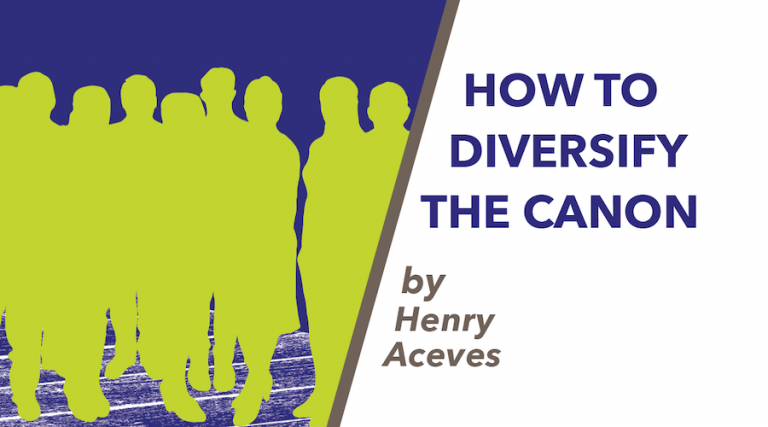Dramaturg’s Note | The Late Wedding
By Elena Freck, Dramaturg (The Late Wedding)
September 23, 2021 19:30:00
Unknown worship center of the Muricaan Tribe
Allow me to tell you about one of the most rigid and bizarre marriage traditions I have observed in my anthropological research to date. First, socially acceptable marriages in this culture only take place between males of the tribe and females; other matches are barred from entering worship centers and can be shunned for deviating from custom. The female must dress as a virgin because an ancient queen once decided to dress as such for her wedding, and she must be hidden from sight prior to entering the worship hall. There seems to be an overwhelming fear in this culture that the bride might run away before performing the marriage ceremony, and many of their customs are designed to eliminate this possibility and coerce her into submission. Indeed, as the bride and groom exit the worship hall, he must pick her up and carry her so she cannot depart without him. Why are they so afraid? For one, it is considered uncouth in this culture to engage in sexual activity with one’s spouse prior to the marriage, so they cannot identify in advance whether or not they will be compatible in that regard. Additionally, there is a strange cultural expectation that marriage locks both parties into the relationship forever. In interviews, tribe members claimed that these marriages are lifelong and legally binding. However, these claims were deceptive! Nearly half of marriages in this culture end in dissolution, and by my measure, this high rate of separation is due to the tribe’s inflexibility and insistence upon ideological purity. We should all be grateful that we are not subjected to these awful procedures!
Do any of those traditions sound familiar? In The Late Wedding, a variety of imagined cultural marriage customs are examined under the lens of tribal anthropology, and many of them may seem, at first glance, to be full of contradiction and rigidity. But told from a distant vantage point and with a desire to shock readers rather than to capture truth, U.S. cultural practices can seem perplexing as well. The Late Wedding showcases how anthropology can be used and misused. Ethnography can be an excellent and broad-reaching methodology for building cultural understanding, empathy, and connection, or, as the fictional Mertos tribe in The Late Wedding could attest, anthropology and ethnography can be applied to the creation of stereotypes and misrepresentation of groups that often cannot represent themselves. The play raises some of the complex ethical dilemmas that surface in the practice of anthropology; but in true metatheatrical fashion, those same predicaments arise in the creation of theatre.
A primary debate in the field of anthropology revolves around the level of involvement or detachment with which a researcher should approach their subjects. Should an anthropologist integrate themself into a culture while they study it, forming relationships with its members and allowing subjects to lead the way? Or should they watch from afar, gathering data as an impartial observer and isolating personal feelings away from the process? In the first paragraph of this note, the “researcher” makes no effort to understand U.S. marriage culture and account for the frequency of marriages between gay couples, couples who have premarital sex, couples from different ethnic traditions, and couples who choose to create their own marriage traditions in this country. The “researcher” assumes that a dominant subculture is the only culture, and they stand staunchly on the side of detachment.
Similar questions of involvement and detachment can be asked of a playwright. Should playwrights write only what they know? Or should they dare to imagine outside of their own realm of experience and risk misrepresenting someone else’s truth?
Another pitfall of anthropology can be the desire to form a singular, cohesive narrative about a culture, a phenomenon that the Nigerian writer Chimamanda Adichie refers to as the “danger of a single story” in her most famous TED Talk. With a small dataset and little urge towards nuance, anthropologists and their readers can draw false conclusions by extrapolating from a case study that is nothing more than a single story. Let’s look at an example: Italo Calvino, the author upon whose work this play is loosely based, engaged in a scandalous affair with an older, married woman during his younger years, but once he married, he remained faithful to his wife for the rest of his life. Using Calvino’s life as a case study, an unempathetic and singularly-focused anthropologist might conclude that marriages in Western cultures are empty contracts, applied selectively and ultimately meaningless. However, most of us understand that there are many reasons why someone might cheat on their spouse, and instances of infidelity do not necessarily speak to a disregard for the significance of marriage on a cultural level.
In the theatre, we select single stories all the time, focusing on one character, one setting, one moment in time. The degree to which those stories are meant to represent anything beyond a self-contained vessel varies between every playwright and every play. Perhaps this is the utility of what playwright Christopher Chen calls “kaleidoscopic structures,” his preferred method of composition which you will see employed during this performance. The Late Wedding grabs stories from here, there, and everywhere; swirling, iterating, and uniting around a single thematic element. The Late Wedding tells a wide array of stories. They are all fictional, but they are also all truthful, in the sense that they were born of a writer’s imagination and speak to a truth of the real world. To claim that this play attempts to represent all marriages would be ludicrous, but the fact that it tells so many stories allows it to avoid some of the dangers of essentializing through a single story.
Anthropologists, ethnographers, and theatre practitioners alike can benefit from examining these questions of distance and representation. Balance can be found between narrowing one’s scope of writing and research to only personal experience, and reaching into another culture without intimately understanding the intricacies of it. Of course, the latter holds more potential for harm, but the former can be limiting. Anthropological texts and plays hold immense power to craft impressions and enforce paradigms, but do they have equal responsibility to treat subjects thoughtfully? Theatre has the ability to utilize fictional characters, scenarios, and cultures — “any resemblance to actual persons, living or dead, is purely coincidental.” But when we see that warning, we usually ask ourselves, is that the case? How much does this piece of fiction resemble reality? Anthropological research doesn’t come packaged with a warning because it is meant to report on actual persons, living or dead. But maybe that same question — how much does this resemble reality? — should emerge.
The Late Wedding opens on Thursday, September 23 and runs through Sunday, September 26 in the Jackie Liebergott Black Box Theater. More information and tickets are available at emersonstage.org/the-late-wedding.

